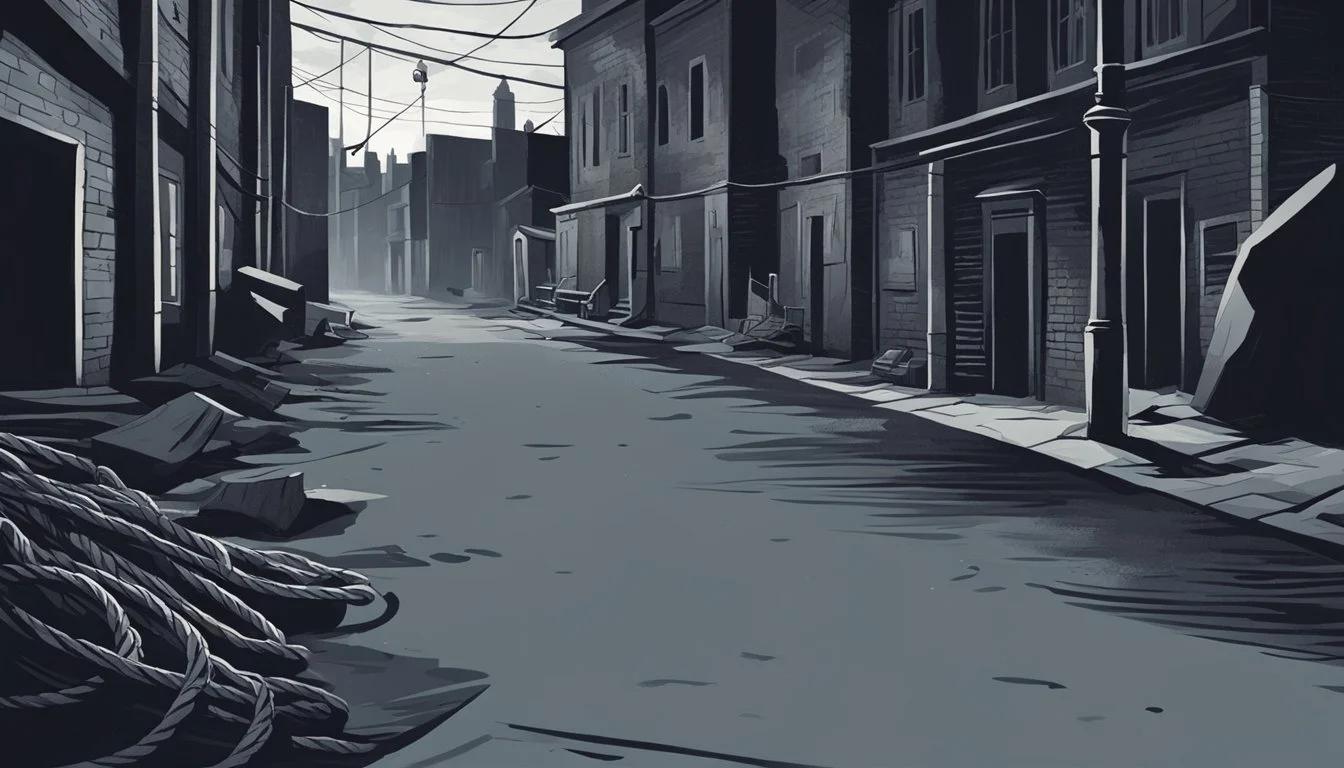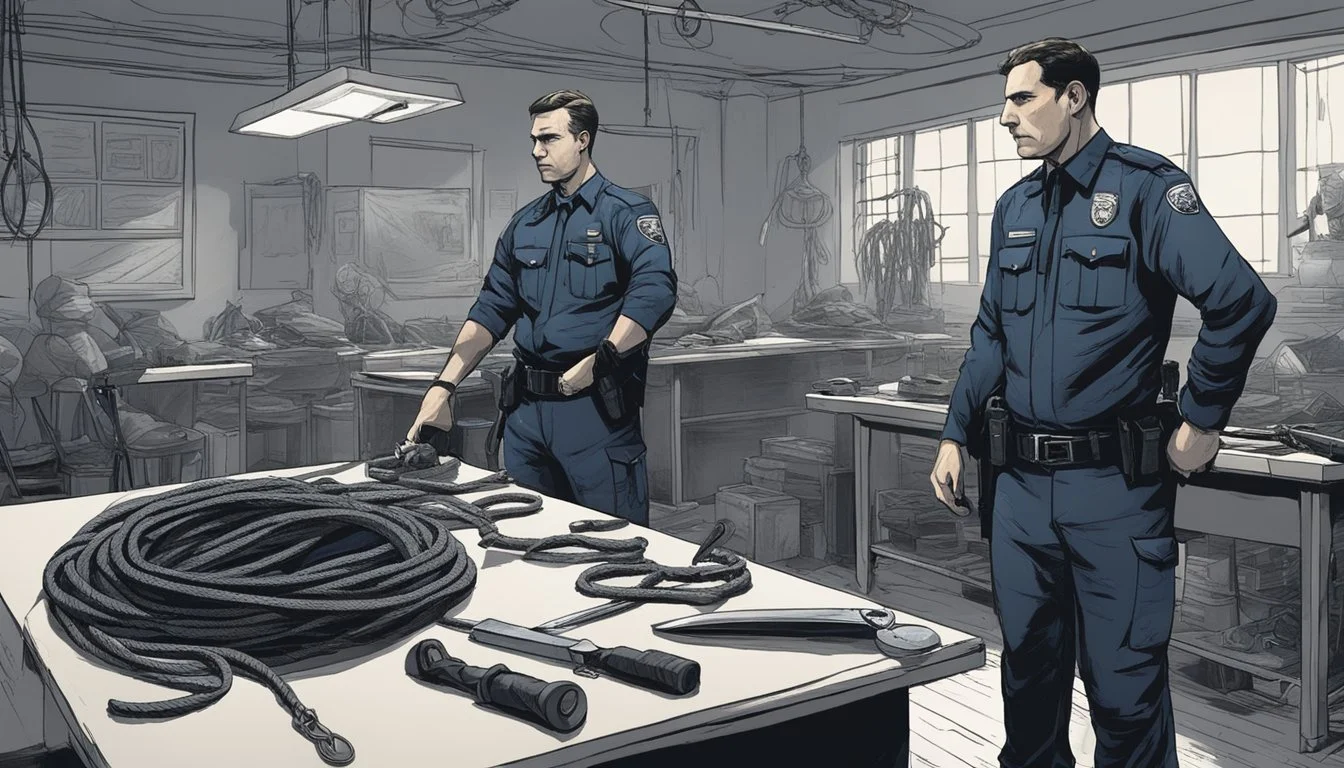Buono and Bianchi: 10 Chilling Methods Used by the Hillside Stranglers
Inside the Brutal Tactics of Los Angeles' Notorious Serial Killers
Kenneth Bianchi and Angelo Buono, known as the Hillside Stranglers, committed a series of brutal murders in Los Angeles during the late 1970s. Their crimes shocked the city and left a lasting impact on true crime history. The cousins employed various methods to lure, torture, and kill their victims, ultimately claiming the lives of 10 women and girls.
Their reign of terror spanned from October 1977 to February 1978, with Bianchi later committing two additional murders in Washington state. The Hillside Stranglers' case has been the subject of numerous documentaries and films, exploring the psychological aspects of the killers and the investigation that led to their capture.
1) Victim Selection Tactics
Angelo Buono and Kenneth Bianchi, known as the Hillside Stranglers, employed specific tactics to select their victims. They primarily targeted young women between the ages of 12 and 28.
The cousins often posed as police officers to gain their victims' trust. This ruse allowed them to approach women without raising suspicion, especially in areas frequented by sex workers.
Buono and Bianchi also targeted students and young professionals. They would scout locations near colleges and residential areas, looking for potential victims who were alone or vulnerable.
The killers sometimes used a van or car to abduct women from streets or bus stops. They would offer rides or fabricate emergencies to lure victims into their vehicle.
In some instances, Buono and Bianchi exploited their connections in the sex industry to target sex workers. Their familiarity with these circles made it easier to isolate and abduct women without drawing attention.
The Hillside Stranglers' victim selection methods demonstrated a calculated approach. They sought out individuals they perceived as easy targets, often exploiting societal vulnerabilities and trust in authority figures.
2) Use of Deception
Kenneth Bianchi and Angelo Buono employed various deceptive tactics to lure their victims. One of their primary methods involved impersonating police officers.
The cousins would approach women, often sex workers, claiming to be law enforcement officials. They used fake badges and identification to gain the trust of their targets.
This ruse allowed them to easily convince victims to get into their vehicle. Once inside, the women found themselves trapped and at the mercy of the killers.
Bianchi and Buono also pretended to be photographers or talent scouts. They promised modeling or acting opportunities to entice young women into accompanying them.
The pair sometimes offered rides to women waiting at bus stops or walking alone. They appeared helpful and non-threatening, masking their true intentions.
Their ability to assume different personas and create believable scenarios made them especially dangerous. These deceptive techniques enabled them to carry out their crimes across Los Angeles for several months before being caught.
3) Posing as Law Enforcement
Kenneth Bianchi and Angelo Buono utilized a sinister tactic to lure their victims: impersonating police officers. This method exploited the inherent trust many people place in law enforcement.
The cousins would approach potential victims, often young women, and claim to be off-duty police officers. They used fake badges and official-sounding language to appear credible.
Once they gained trust, Bianchi and Buono would convince their targets to accompany them, often under the pretense of questioning or assistance. This ruse allowed them to isolate their victims easily.
The impersonation strategy was particularly effective in the late 1970s when awareness of such tactics was less prevalent. It also made potential victims less likely to resist or seek help.
This method not only facilitated their crimes but also instilled fear in the community. People became wary of trusting even actual law enforcement, creating a climate of uncertainty and panic in Los Angeles.
The Hillside Stranglers' use of this tactic highlights the importance of verifying the identity of individuals claiming to be police officers, especially in uncertain situations.
4) Strangulation Methods
Buono and Bianchi employed various strangulation techniques during their killing spree. The cousins often used ligatures, such as electrical cords or nylon stockings, to choke their victims.
In some cases, they resorted to manual strangulation, using their hands to cut off the air supply. This method allowed them to control the duration and intensity of the strangulation.
The killers sometimes combined strangulation with other forms of torture, prolonging their victims' suffering. They occasionally used plastic bags to suffocate their targets, intensifying the terror and pain.
Buono and Bianchi's strangulation methods were not always immediately fatal. In certain instances, they revived their victims only to strangle them again, demonstrating a sadistic desire to extend the ordeal.
The cousins' proficiency in these techniques grew over time, as evidenced by the increasing efficiency of their murders. Their methods became more refined and calculated with each victim.
5) Use of Ligatures
The Hillside Stranglers, Kenneth Bianchi and Angelo Buono, employed ligatures as a signature method in their murders. They used various materials to bind and strangle their victims, leaving distinct marks on the bodies.
Rope, electrical cords, and pantyhose were among the items used as ligatures. These objects allowed the killers to restrain and control their victims effectively. The strangulation method often resulted in visible ligature marks on the victims' necks, wrists, and ankles.
Forensic evidence of ligature use became a crucial element in linking the murders to the same perpetrators. The consistent pattern of marks left on the victims' bodies helped investigators connect the crimes and build a case against Bianchi and Buono.
The use of ligatures not only served as a means of murder but also demonstrated the killers' desire for control and domination over their victims. This method aligned with their tendency to pose as authority figures to lure unsuspecting women into their trap.
6) Sexual Assault
The Hillside Stranglers subjected their victims to brutal sexual assaults before murdering them. Buono and Bianchi used rape as a means of control and domination over their captives.
The cousins often employed bondage techniques during these attacks, restraining their victims with ropes or handcuffs. They would take turns assaulting the women, sometimes for extended periods.
Forensic evidence revealed signs of sexual trauma on all the victims' bodies. Some showed indications of both vaginal and anal assault. The sexual violence inflicted by Buono and Bianchi was a key component of their sadistic behavior.
Investigators found that the pair derived pleasure not just from the physical acts, but from the psychological torment they caused their victims. They would often taunt and threaten the women during the assaults.
The sexual nature of their crimes helped establish a pattern that eventually led to their capture. DNA evidence collected from the victims played a crucial role in linking Buono and Bianchi to the murders.
7) Drive-by Abductions
Kenneth Bianchi and Angelo Buono employed a terrifying method to capture their victims: drive-by abductions. The cousins would cruise the streets of Los Angeles in their vehicle, searching for potential targets.
They often focused on areas frequented by sex workers or young women walking alone. Once they spotted a victim, they would quickly pull up alongside them in their car.
Using a combination of deception and force, Bianchi and Buono would lure or drag the unsuspecting women into their vehicle. They sometimes posed as police officers to gain trust and compliance from their victims.
The speed and suddenness of these abductions made it difficult for witnesses to intervene or for victims to escape. This tactic allowed the killers to operate in plain sight, even in populated areas.
By using drive-by abductions, Bianchi and Buono were able to quickly remove their victims from public view. This method proved disturbingly effective, enabling them to carry out their crimes across Los Angeles for several months.
8) Vehicle Customization for Abductions
Kenneth Bianchi and Angelo Buono modified their vehicle to facilitate their crimes. They equipped Buono's car with false police lights and a siren to impersonate law enforcement officers.
The cousins added tinted windows to their vehicle, providing privacy and concealment during abductions. They installed soundproofing materials to muffle victims' screams and prevent detection.
The car's trunk was reinforced and lined to contain victims during transport. Special locks were added to prevent escape attempts. Buono and Bianchi kept tools and restraints hidden in compartments throughout the vehicle.
They used removable license plates to evade identification. The car's exterior was kept nondescript to avoid drawing attention. These modifications allowed the Hillside Stranglers to carry out their crimes undetected for an extended period.
Their vehicle became a mobile crime scene, enabling them to abduct, assault, and transport victims efficiently. The customizations reflected the premeditated nature of their attacks and their efforts to avoid capture.
9) Communication and Coordination
Buono and Bianchi's ability to communicate and coordinate their actions played a crucial role in their crime spree. As cousins, they had a pre-existing familial bond that facilitated trust and cooperation.
The pair often used coded language and discreet signals to plan their attacks. This allowed them to operate undetected in public spaces while scouting for potential victims.
Their coordination extended to the execution of their crimes. They worked in tandem during abductions, with one typically luring the victim while the other prepared the vehicle.
The cousins also divided tasks during their attacks. This efficient teamwork enabled them to overpower victims quickly and minimize the risk of detection.
Their communication continued after the murders, as they discussed methods to evade law enforcement. They shared information about police investigations and adjusted their tactics accordingly.
This level of coordination made the Hillside Stranglers case particularly challenging for investigators. The duo's ability to work together seamlessly contributed to their ability to carry out multiple murders before being apprehended.
10) Body Disposal Techniques
Buono and Bianchi employed specific methods to dispose of their victims' bodies. They often dumped the corpses in hillside areas around Los Angeles, leading to their infamous moniker.
The killers typically left the bodies in visible locations. This tactic allowed for quicker discovery, potentially increasing media coverage and public fear.
They sometimes positioned the bodies in provocative poses. This macabre practice was likely intended to shock those who found the victims and garner more attention for their crimes.
Buono and Bianchi occasionally scattered victims' belongings near the dump sites. This could have been an attempt to confuse investigators or simply a careless oversight.
In some instances, they transported bodies across county lines. This strategy may have been aimed at complicating jurisdictional issues for law enforcement agencies.
The cousins rarely made efforts to conceal or bury the bodies. This brazen approach aligned with their apparent desire for notoriety and to instill terror in the community.
Background of Buono and Bianchi
Angelo Buono and Kenneth Bianchi, the infamous Hillside Stranglers, shared a troubled past and a disturbing psychological makeup. Their early experiences and relationship set the stage for their later crimes.
Early Life and Relationship
Angelo Buono was born in 1934 in Rochester, New York. He moved to California as a teenager and quickly developed a reputation for violence and misogyny. Kenneth Bianchi, Buono's younger cousin, was born in 1951 and adopted as an infant.
The cousins reunited in Los Angeles in 1976 when Bianchi moved from Rochester. Buono, then in his 40s, took the younger Bianchi under his wing. Their relationship was marked by a shared hatred of women and a desire for power and control.
Buono ran an auto upholstery business, which became a front for their criminal activities. Bianchi, struggling to find stable employment, was easily influenced by his older cousin's criminal mindset.
Psychological Profile
Both men exhibited traits consistent with antisocial personality disorder. Buono was known for his aggressive behavior and lack of empathy. He had a history of domestic violence and sexual assault.
Bianchi displayed signs of being a pathological liar and had a tendency to seek attention. He attempted to become a police officer but was rejected. This failure may have fueled his later impersonation of law enforcement during their crimes.
The cousins' shared psychopathy manifested in their ability to work together to commit heinous acts. They showed no remorse for their victims and took pleasure in the power they held over them.
Their psychological issues were likely exacerbated by substance abuse, as both men were known to use drugs and alcohol regularly.
The Hillside Stranglers Investigation
The investigation into the Hillside Stranglers case involved intense scrutiny and numerous challenges for law enforcement. Detectives worked tirelessly to uncover leads and connect the dots between seemingly disparate murders.
Initial Suspicions and Breakthroughs
Investigators initially struggled to link the murders due to the varied victim profiles. The discovery of multiple bodies in the hills around Los Angeles raised alarms. Police noticed similarities in the victims' cause of death - strangulation.
A crucial breakthrough came when witnesses reported seeing two men posing as police officers. This led detectives to suspect the involvement of multiple perpetrators. The investigation gained momentum after Kenneth Bianchi's arrest in Washington state for similar crimes.
Bianchi's confession implicated his cousin, Angelo Buono. This revelation shocked investigators and provided a new direction for the case. DNA evidence and witness testimonies further solidified the connection between the cousins and the murders.
Law Enforcement Challenges
The investigation faced numerous obstacles. The killers' method of impersonating police officers made it difficult to gather reliable witness accounts. Victims' diverse backgrounds complicated efforts to establish a clear pattern.
Limited forensic technology in the late 1970s hindered the collection and analysis of evidence. Pressure from the media and public created additional stress for the investigators. Jurisdictional issues arose as the murders spanned multiple areas.
Coordination between different law enforcement agencies proved challenging. The scale of the investigation required significant resources and manpower. Detectives had to sift through numerous false leads and confessions.
The breakthrough in Washington state highlighted the importance of inter-state cooperation in solving serial killer cases. The eventual arrest and conviction of Buono and Bianchi marked a significant victory for law enforcement.
Court Trials and Sentencing
Kenneth Bianchi and Angelo Buono faced justice for their heinous crimes in separate trials. Bianchi initially pleaded not guilty by reason of insanity, claiming multiple personality disorder.
Experts eventually determined Bianchi was faking his condition. He then agreed to plead guilty and testify against Buono in exchange for avoiding the death penalty.
Buono's trial began in November 1981 and became the longest criminal trial in U.S. history at the time, lasting over two years. The prosecution called 400 witnesses and presented 56,000 pages of testimony.
Despite attempts to dismiss charges due to lack of physical evidence, the jury found Buono guilty on nine counts of murder in November 1983. He received a life sentence without the possibility of parole.
Bianchi pleaded guilty to five murders in California and two in Washington state. He was sentenced to life imprisonment in both states.
Both men remain incarcerated to this day, with Buono dying in prison in 2002 at the age of 67. Bianchi continues to serve his life sentences in Washington State Penitentiary.




